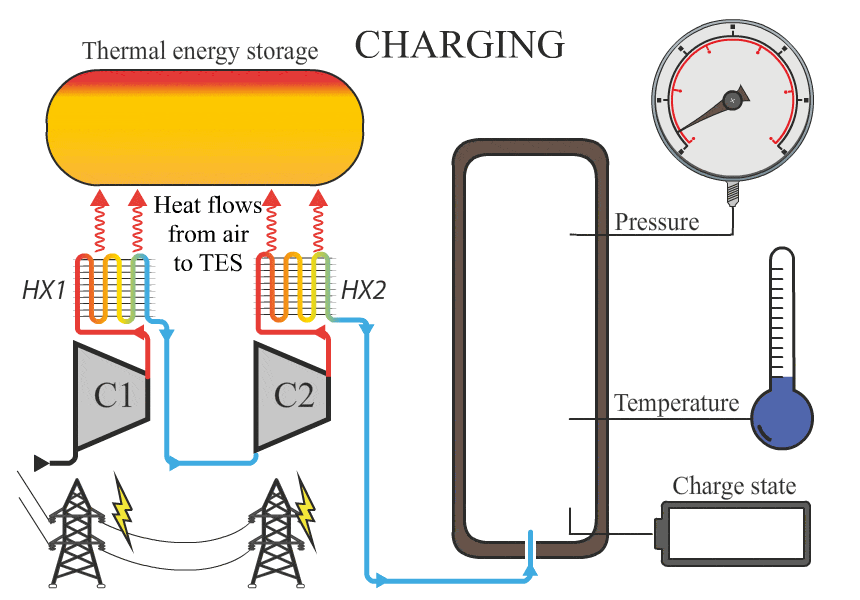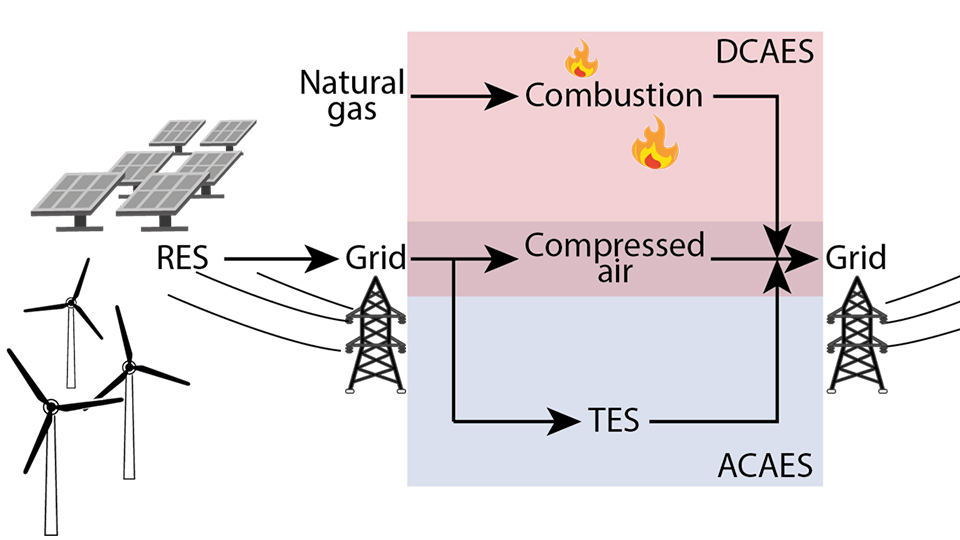Energy Storage

In future, large-scale electricity storage methods will be required for energy systems with high penetrations of variable renewable generation. There is a particularly urgent need for low-cost large-scale energy storage to store vast amounts of renewable energy which could cover days or even weeks with low-renewable outputs from wind and solar farms. We also need fast responding energy storage technologies which can respond to sudden changes in renewable output, or faults in the system, and this is where electrochemical batteries are becoming very important. Batteries on a smaller scale can also be used to support microgrids which operate reliably with renewable generators, phasing out the use of diesel gensets, sometimes completely independently from the grid. Thermal energy storage will also be crucial in future, since such a large proportion of the energy that we use globally is for heating, and this heat is, at present, mostly provided by combustion of fossil fuels.
Our Aim
Our mission in the Energy Storage group is to discover and refine the technologies which will be required in future sustainable energy systems. In particular, we are interested in thermal energy storage (TES), thermo-mechanical energy storage methods such as compressed air energy storage (CAES) and pumped thermal energy storage (PTES), and electrochemical batteries. Hence our research aims to bring these innovative technologies from concepts and early-stage prototypes into reality.
In the areas of thermal and thermomechanical energy storage we perform thermodynamic analyses, simulation, modelling and design work, as well as conducting experiments to improve the performance of these systems. We are particularly interested in the characterisation of new TES materials and the design of novel reactors that will allow TES materials to be integrated within the buildings of the future. Within the area of electrochemical batteries, our research optimises the performance, safety and lifetime of the battery systems for grid and microgrid support. Our work also considers the optimisation and integration of large-scale energy storage within high-renewable energy systems. We work on both new and second life battery systems.
In addition, we are currently looking at combined fuel and electrochemical storage using battolysers. A battolyser is a flow battery that stores energy electrochemically but can also be used to generate hydrogen through electrolysis. Please see the group on green hydrogen for more information about this.
